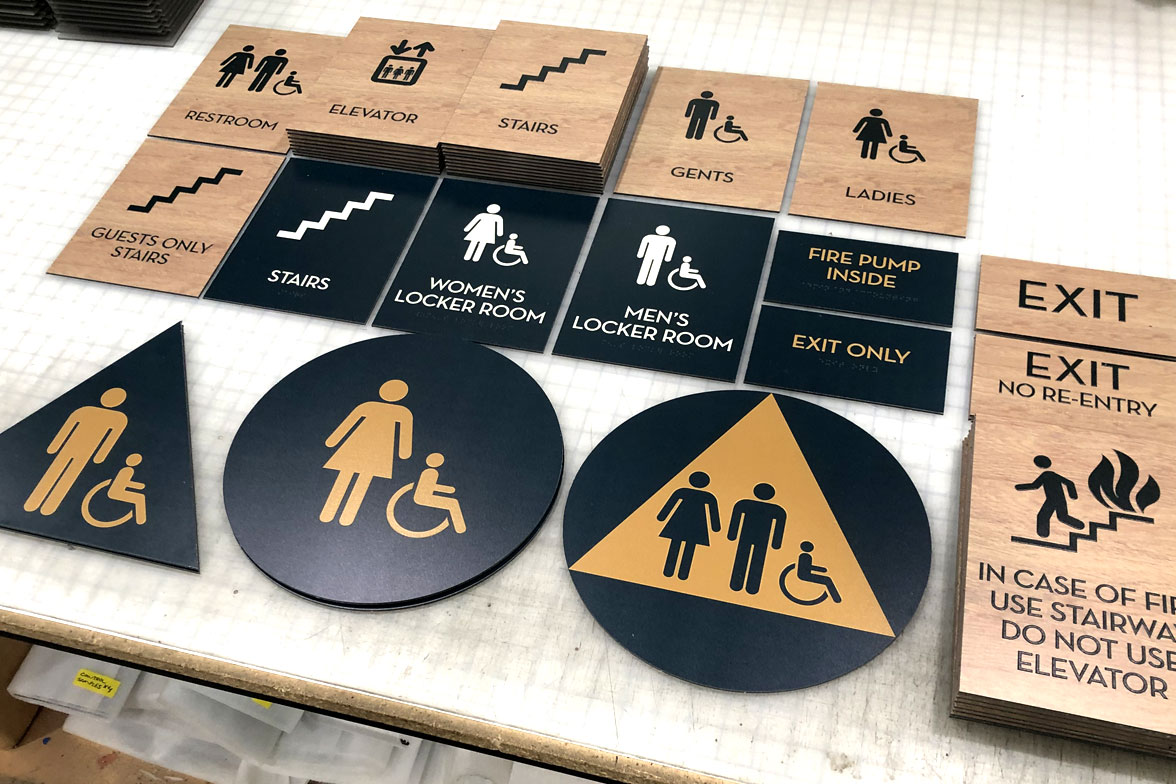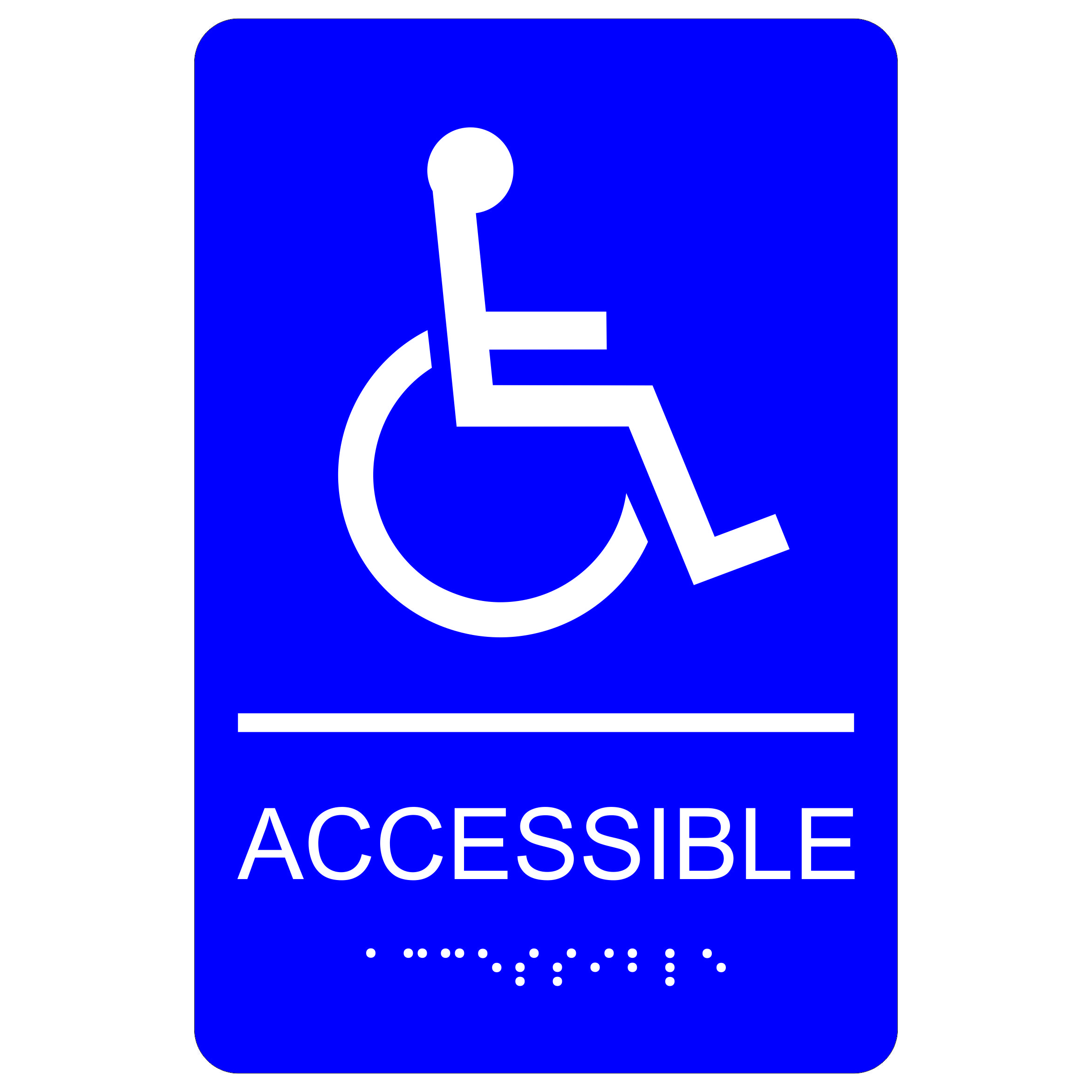How ADA Signs Enhance Ease Of Access for Everyone
How ADA Signs Enhance Ease Of Access for Everyone
Blog Article
Exploring the Key Attributes of ADA Indicators for Enhanced Access
In the realm of availability, ADA indicators function as quiet yet powerful allies, ensuring that spaces are comprehensive and accessible for people with specials needs. By integrating Braille and tactile components, these indications break obstacles for the aesthetically impaired, while high-contrast shade systems and readable font styles provide to varied aesthetic demands. Their strategic positioning is not arbitrary yet instead a computed effort to promote seamless navigating. Yet, past these attributes lies a much deeper story about the advancement of inclusivity and the recurring commitment to developing equitable rooms. What extra could these indicators represent in our search of universal accessibility?
Importance of ADA Compliance
Making certain compliance with the Americans with Disabilities Act (ADA) is essential for fostering inclusivity and equal gain access to in public rooms and workplaces. The ADA, passed in 1990, mandates that all public facilities, employers, and transportation solutions suit individuals with handicaps, ensuring they delight in the exact same legal rights and possibilities as others. Compliance with ADA criteria not just meets lawful obligations yet also enhances an organization's credibility by showing its commitment to diversity and inclusivity.
One of the crucial facets of ADA conformity is the application of available signage. ADA indicators are designed to make certain that people with impairments can easily navigate through spaces and structures.
Additionally, sticking to ADA guidelines can reduce the risk of possible fines and lawful consequences. Organizations that stop working to conform with ADA standards may face charges or lawsuits, which can be both damaging and monetarily challenging to their public image. Therefore, ADA compliance is indispensable to promoting a fair setting for everyone.
Braille and Tactile Aspects
The consolidation of Braille and responsive aspects right into ADA signs embodies the principles of availability and inclusivity. It is normally placed below the matching message on signs to make certain that individuals can access the info without aesthetic help.
Responsive aspects prolong beyond Braille and include elevated characters and symbols. These parts are designed to be discernible by touch, allowing individuals to recognize area numbers, toilets, exits, and other vital areas. The ADA sets certain standards relating to the dimension, spacing, and placement of these tactile elements to maximize readability and guarantee uniformity throughout different settings.

High-Contrast Color Design
High-contrast color systems play an essential role in boosting the visibility and readability of ADA signs for people with aesthetic problems. These systems are important as they optimize the distinction in light reflectance between text and background, making sure that indicators are quickly discernible, even from a range. The Americans with Disabilities Act (ADA) mandates using details shade contrasts to suit those with minimal vision, making it a vital element of conformity.
The effectiveness of high-contrast shades hinges on their capability to stick out in different lighting conditions, including poorly lit settings and locations with glow. Typically, dark message on a light history or light text on a dark background is employed to achieve optimal contrast. Black message on a white or yellow background gives a plain aesthetic difference that aids in fast recognition and understanding.

Legible Fonts and Text Dimension
When thinking about the layout of ADA signs, the selection of readable font styles and suitable message size can not be overemphasized. These components are essential for ensuring that indications come to individuals with aesthetic impairments. The Americans with Disabilities Act (ADA) mandates that font styles have to be not italic and sans-serif, oblique, script, very ornamental, or of unusual form. These requirements help ensure that the message is quickly understandable from a distance which the characters are distinguishable to diverse audiences.
The size of the text also plays an essential role in access. According to ADA standards, the minimum message elevation must be 5/8 inch, and it needs to enhance proportionally with viewing distance. This is specifically essential in public rooms where signage requirements to be reviewed rapidly and properly. Consistency in next text size adds to a cohesive visual experience, helping people in browsing atmospheres efficiently.
Furthermore, spacing between letters and lines is important to readability. Appropriate spacing prevents personalities from appearing crowded, enhancing readability. By adhering to these standards, developers can substantially boost access, making certain that signs offers its intended objective for all people, despite their visual capacities.
Effective Positioning Methods
Strategic positioning of ADA signage is necessary for optimizing ease of access and guaranteeing compliance with legal standards. Properly positioned indicators lead people with specials needs successfully, helping with navigation in public rooms. Trick considerations include distance, exposure, and elevation. ADA guidelines state that indications must be installed at an elevation in between 48 to 60 inches from the ground to guarantee they are within the line of view for both standing and seated people. This typical elevation array is critical for inclusivity, enabling mobility device individuals and people of differing elevations to gain access to info easily.
Additionally, signs must be positioned surrounding to the lock side of doors to enable very easy recognition before access. Consistency in indicator placement throughout a facility improves predictability, reducing complication and boosting general individual experience.

Conclusion
ADA indicators play an essential duty in advertising access by incorporating attributes that resolve the needs of individuals with disabilities. These elements jointly cultivate a comprehensive atmosphere, underscoring the significance of ADA compliance in ensuring equivalent accessibility for all.
In the world of ease of access, ADA indications offer as quiet yet effective allies, making sure that areas are inclusive and accessible for individuals with impairments. The ADA, enacted in 1990, mandates that all public centers, employers, and transport solutions fit individuals with handicaps, guaranteeing they take pleasure in the same rights and opportunities as others. ADA Signs. ADA indicators are created to guarantee that people with specials needs can easily navigate via areas and buildings. ADA standards specify that indications should be placed at a height in between 48 to 60 inches from the ground to ensure they are within the line of view for both standing and seated people.ADA indications play a vital function in promoting access by integrating attributes that resolve the requirements of people with impairments
Report this page